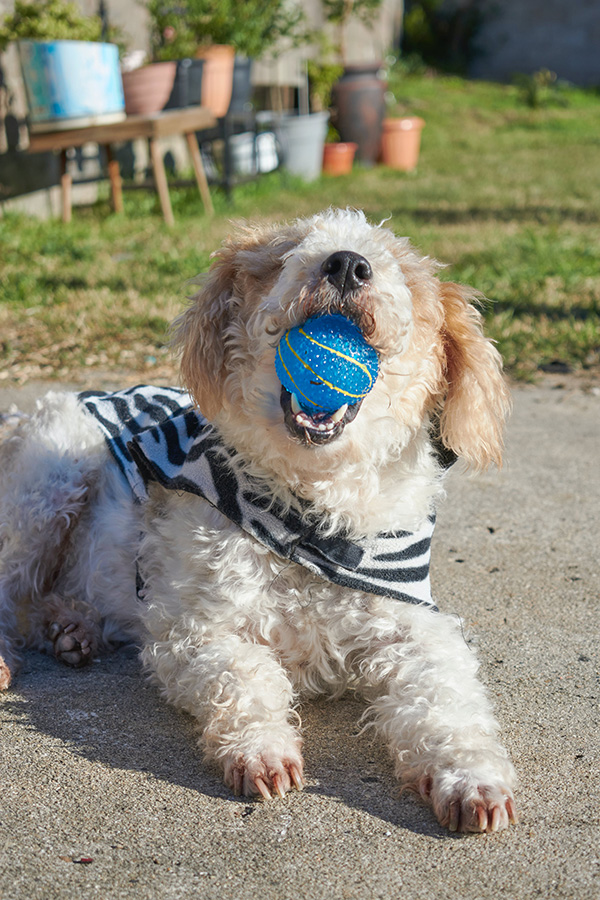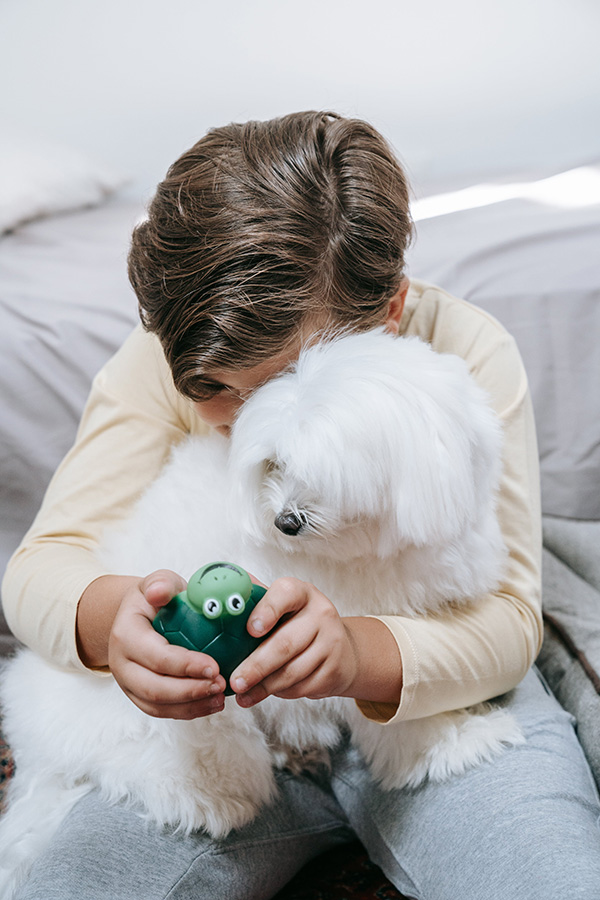Have you ever tossed a red ball into the green grass and watched your dog scramble to find it, leaving you wondering if they struggle with colors? This observation leads to a fascinating question many dog owners ponder: Are dogs color blind? The myth that dogs only see the world in black and white has been a topic of discussion for years, yet recent scientific insights have shed light on the reality of canine color perception.
In this article, we will explore the way in which dogs perceive colors, shedding light on the intricacies of their color vision. Understanding how our furry friends perceive their surroundings satisfies our curiosity and enhances our connection with them.
What Is Color Blindness
Color blindness, scientifically termed color vision deficiency, is a visual condition that impacts one's capacity to perceive certain colors accurately. It is crucial to clarify that color blindness does not entail viewing the world exclusively in black and white, a common misconception. Rather, it encompasses challenges in distinguishing or perceiving particular colors in a manner distinct from individuals with typical color vision.
Are dogs color blind?
The short answer is no, but their color vision is quite different from that of humans. Dogs do not perceive the world solely in black and white; rather, their visual experience is confined to a more restricted range of colors. This distinction is attributed to the anatomical structure of the dog's eye. Unlike humans, who possess three types of color-detecting cells known as cones, enabling us to see a spectrum from red to violet, dogs only have two types of cones. This dichromatic vision results in their primary perception of the world in shades of blue and yellow.

What Does This Mean to You and Your Dog?
What implications does this have for your canine companion? Well, while dogs can distinguish blue and yellow toys easily, they might have red-green color blindness. This implies that dogs might encounter challenges distinguishing between red and green objects, as these colors may appear more akin to shades of brownish-gray in their vision. So, next time you pick out a toy or accessory for your dog, remember that they might appreciate a blue ball more than a red one.
Understanding your dog's color perception can also explain certain behaviors. Ever wonder why your dog might be less interested in a red toy on green grass? It's likely because both colors appear similar to them, making the toy harder to distinguish. This insight into your dog's perception can help you choose environments and toys that are more engaging and visually stimulating for them.
So, while dogs might not see the rainbow as humans do, they certainly don't view the world in mere black and white. The unique dog's color vision is just another fascinating aspect of their world, giving us a glimpse into how they interact with their surroundings.
Which Colors Can Dogs See?
To begin with, it's essential to understand that the human eye and the canine eye are structurally different. In human eyes, there are three types of color-detecting cells called cones, each sensitive to a specific part of the color spectrum. Our possession of three types of cones enables us to perceive an extensive array of colors, spanning from red to violet. Conversely, dogs with only two types of cones experience a more constrained range of color perception.
In a dog's visual world, blue and yellow emerge as the predominant colors that stand out. These hues appear vibrant and distinct in their perception. If you've ever noticed your dog enthusiastically chasing a bright blue ball or enjoying a sunny yellow toy, it's because these colors are visually appealing to them.
However, dogs' color vision differs significantly from ours in their perception of red and green. These colors appear more subdued to dogs, often taking on a brownish-gray hue. This is due to the absence of cones that are sensitive to red light in their retinas. As a result, dogs may struggle to differentiate between red and green objects, making them appear similar in shade.
This unique dog color vision can explain certain behaviors exhibited by dogs. For example, if your dog seems less interested in a red dog toy on green grass, it's because the contrast between the two colors is less apparent to them. Understanding this can help you choose dog toys and accessories that are more visually stimulating for your furry friend.

What does a dog's vision compare to a human's?
Understanding the variations in vision between dogs and humans offers valuable insights into their behavior and sheds light on how they perceive the world. It also helps pet owners cater to their pets' visual needs and preferences, ultimately strengthening the bond between humans and their canine companions.
Limited Color Perception
Dogs exhibit a distinctive mode of perceiving the world in terms of color. Their vision is dichromatic, signifying the presence of two types of color receptors (cones) in their retinas. These cones specifically respond to blue and yellow wavelengths of light. The resulting limited color spectrum indicates that the dog sees the world in shades of blue and yellow. Dogs may find it challenging to distinguish between shades of the same color, such as distinguishing between light blue and dark blue.
To dogs, red and green colors manifest as shades of gray. In contrast, humans are trichromatic, equipped with three types of cones that enable us to perceive a broad spectrum of colors, contributing to a richer and more detailed color vision.
Enhanced Motion Detection
One of the remarkable features of a dog's vision is their exceptional ability to detect motion. Dogs are highly attuned to changes in their visual field, which makes them excellent hunters and trackers. Their keen sense of motion detection allows them to spot even subtle movements, whether it's the rustling of leaves in the wind or the scurrying of a small animal in the distance. This skill has evolved as an essential part of their survival strategy.
Night Vision
Dogs are well-equipped for low-light conditions and nighttime activities. This advantage stems from the greater abundance of rod cells in their retinas, which exhibit heightened sensitivity to low light levels. As a result, dogs have superior night vision compared to humans. They can see in dim lighting conditions where human vision would be severely compromised. This adaptation has allowed them to be effective nocturnal animals throughout their evolution.
Blurred Vision Up Close
While dogs have their strengths in vision, they also have limitations. Up close, their vision is slightly blurred compared to humans. This means that objects very near to them may appear less distinct. To compensate for this, dogs rely more on their sense of smell and hearing for close-range interactions. This is why they often nuzzle or sniff objects they want to examine closely.
Peripheral Vision
Dogs have an impressive field of peripheral vision. Positioned on the sides of their heads, their eyes provide a wide visual field that extends to the periphery. This wide peripheral vision allows them to effectively detect movement or objects at the edges of their visual field. It's a valuable skill for spotting potential threats or prey from a distance, which is essential for their survival instincts.
Depth Perception
Dogs possess depth perception, albeit it may not be as precise as that of humans. This ability enables them to judge distances effectively, a crucial skill for various activities. For example, it helps them catch a ball mid-air, navigate complex terrains, or gauge the distance when leaping over obstacles.
